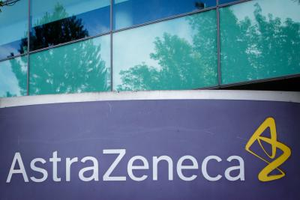Transforming Infrastructure and PLM: Rafa Abdul’s Leadership in Technical Innovation

Rafa Abdul has emerged as a pivotal figure in the intersection of Product Lifecycle Management and AI/ML Data Center Infrastructure, with over a decade of experience driving transformative changes across global organizations. From optimizing manufacturing processes to leading large-scale data center initiatives, his career exemplifies the successful fusion of technical expertise with strategic program management. His innovative approaches have resulted in multimillion-dollar cost savings and significant efficiency improvements in global operations.
Q 1: How has your research background influenced your approach to technical program management?
A: My research in injection molding and artificial neural networks, which led to a publication in the International Journal of Interactive Design and Manufacturing, instilled in me a methodical approach to problem-solving. This scientific mindset has been invaluable throughout my career in data center infrastructure, where I analyze complex infrastructure challenges systematically. When leading data center deviation process improvements, I applied similar analytical techniques to identify bottlenecks and optimize solutions, resulting in a 50% reduction in processing time.
Q 2: What role has cross-functional collaboration played in your major initiatives?
A: Cross-functional collaboration has been crucial to every significant achievement in my career. Working with Data center Design Engineering, Capacity Planners, BOM Builders, and Construction teams requires understanding diverse perspectives and aligning different priorities. For example, when leading the Power & Cooling equipment data migration project across 530 Data centers, success depended on seamless collaboration between operations engineers, PLM specialists, and infrastructure teams to achieve that 98% improvement in equipment validation.
Q 3: How do you approach the challenge of global process standardization?
A: Standardizing processes across global operations requires balancing consistency with local flexibility. During my time at WaterFurnace, I implemented change management processes that reduced lead time by 50% which resulted in the ability to manufacture products more quickly, enabling faster production cycles and improving overall operational efficiency by 30%. This reduction allowed us to meet demand more promptly while maintaining product quality and aligning with customer expectations. This experience helped me streamline Data Center Design intake processes globally, improving on-time Data center design performance to 95% while maintaining adaptability for local requirements.
Q 4: What strategies have you employed to drive technological adoption?
A: Successful technology adoption requires a combination of clear vision and practical implementation steps. At WaterFurnace, I trained over 100 users in PLM Change Management while implementing Active Workspace cloud. The key was creating a comprehensive adoption strategy that included user training, support systems, and clear communication of benefits. This experience proved valuable when implementing new infrastructure management tools and processes throughout my career.
Q 5: How do you manage complex data migration projects?
A: Data migration projects require careful planning and robust validation processes. At TATA, I developed strategies using PLMXML import/export that reduced migration time by 50%. This experience informed my approach during the Data center Power & Cooling equipment data migration, where we established clear validation protocols and phased implementation plans to ensure data integrity while maintaining operational continuity.
Q 6: What’s your approach to infrastructure optimization?
A: Infrastructure optimization requires a holistic view of both technical capabilities and business needs. Throughout my career, I’ve led initiatives to improve efficiency in landing high-density compute ML racks, resulting in an 86% reduction in low-density rack landings in the Data center. This required understanding both technical constraints and business objectives while working closely with engineering teams to develop innovative solutions that optimized power usage and rack placement strategies for AWS.
Q 7: How do you ensure quality in large-scale deployments?
A: Quality assurance in large-scale deployments requires systematic testing and validation processes. During my time at TATA, I conducted comprehensive testing across multiple PLM version releases. This experience has been valuable in implementing rigorous quality control measures for infrastructure deployments, including automated testing and validation protocols to ensure consistent performance across global operations.
Q 8: What role does sustainability play in your infrastructure planning?
A: Sustainability has become increasingly central to infrastructure planning. When optimizing data center designs and rack placements, we consider not just operational efficiency but also environmental impact. The reduction in low-density rack landings not only delivered cost savings but also improved power utilization efficiency. This demonstrates how operational excellence and sustainability goals can be aligned through thoughtful planning and implementation.
Q 9: How do you leverage automation in program management?
A: Automation is a key enabler for managing programs at scale. At TATA, I developed scripts that reduced manual processes by 80% for GE Oil & Gas. I’ve expanded this approach by implementing automated workflows for data center design intake and rack order supply chain processing. The key is identifying processes that benefit most from automation while ensuring robust error handling and monitoring capabilities.
Q 10: What emerging trends do you see in infrastructure and PLM integration?
A: The future of infrastructure and PLM integration will be shaped by increased automation, AI-driven decision-making, and real-time optimization capabilities. I anticipate greater emphasis on predictive analytics for infrastructure planning and automated resource optimization. The challenge will be integrating these advanced capabilities while maintaining system reliability and operational efficiency.
About Rafa Abdul
Rafa Abdul is an accomplished Technical Program Manager known for his expertise in PLM and AI/ML data center infrastructure optimization. With a Master’s in Manufacturing Engineering from Bradley University and significant research contributions in manufacturing processes, he brings a unique combination of technical depth and strategic thinking to complex infrastructure challenges. His leadership has resulted in substantial operational improvements and cost savings across global operations, while his innovative approaches to process optimization and infrastructure planning continue to drive excellence in technical program management.
First Published: 11November, 2022





